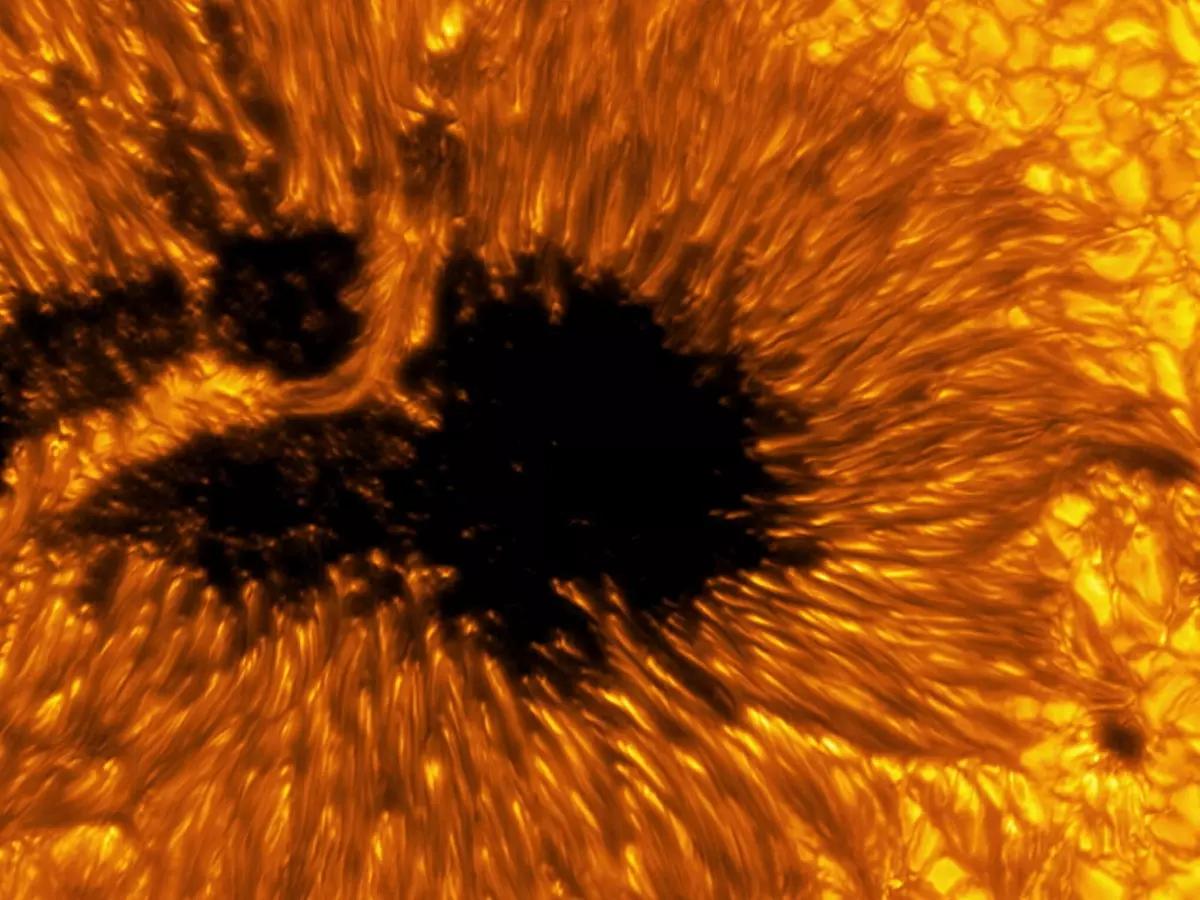Earth's Most Powerful Solar Telescope Shows Sunspots In Mind-Numbing Detail
The sunspots depicted in the image are dark areas on the Sun's photosphere, equivalent to what we understand as surface on Earth

Images from the world's most powerful solar telescope have revealed the Sun in crazy detail. The Daniel K. Inouye Solar Telescope is a ground-based telescope located on the Hawaiian island of Maui. It is able to reveal the Sun in extraordinary detail with highly-detailed images of sunspots that are even bigger than the Earth.
According to the National Science Foundation (NSF), the telescope offers a preview of the "exciting science underway" at the telescope. The telescope can also collect data with utmost precision, allowing scientists to eventually understand the Sun's magnetic field and the factors that drive solar storms. While the telescope is currently in its initial operation stage, it will soon be fully operational once scientists learn more about its real-time capabilities.
 NSF/AURA/NSO
NSF/AURA/NSO
Sunspots captured in amazing detail
In the new images, you may treat yourself to mesmerising visuals of sunspots, along with more calm regions of the star. All these were captured using the Visible-Broadband Imager (VBI), one of the telescope's first-generation instruments.
The sunspots depicted in the image are dark areas on the Sun's photosphere, equivalent to what we understand as the surface on Earth. At these sunspots, strong magnetic fields may be seen.
Also read: Astronomers Discover Ultramassive Black Hole 30 Billion Times Larger Than Sun
The new images represent a small fraction of the data that was taken during the first cycle of the observation window. The Inouye Solar Telescope¡¯s Data Center will make this data available to the public as they continue research.
 NSF/AURA/NSO
NSF/AURA/NSO
According to the operating body, the Inouye Solar Telescope is expected to reveal more findings from the scientific community, with a promise to show "spectacular views of our solar system¡¯s most influential celestial body."
Capturing spots is quite the cosmic feat, for many sunspots are bigger than the Earth. These sunspots are responsible for causing coronal mass ejections and flares that in turn cause solar storms.
Also read: Water On Earth And In Our Solar System Could Be Older Than The Sun, New Study Claims
 SWNS
SWNS
The telescope also captured the Sun's quieter regions wherein the images illustrate convection cells in the photosphere that show a bright plasma that flow upwards. These are encircled by cooler and darker plasma that flows downwards.
What do you think about these stunning images? Let us know in the comments below. For more in the world of technology and science, keep reading Indiatimes.com.
